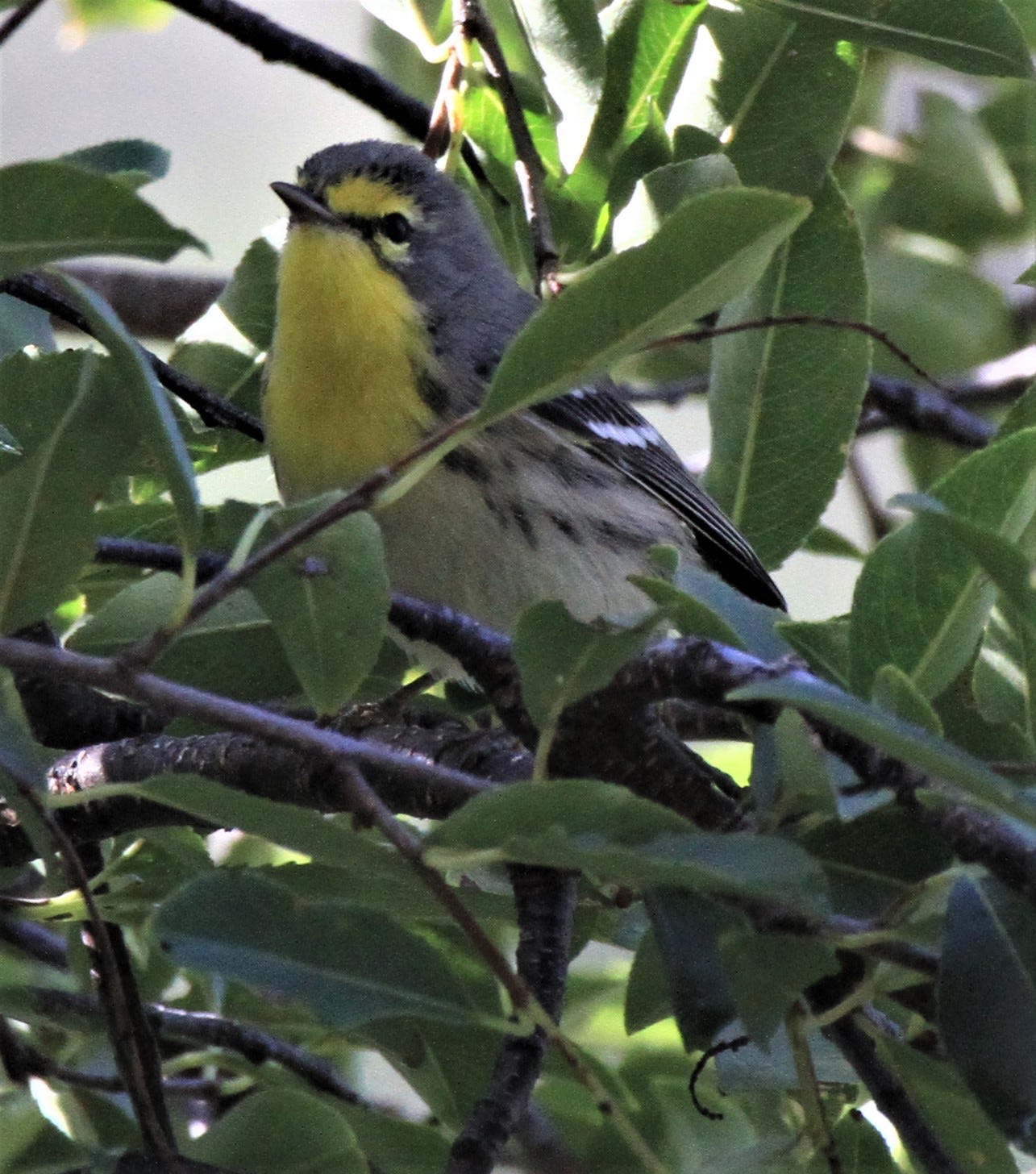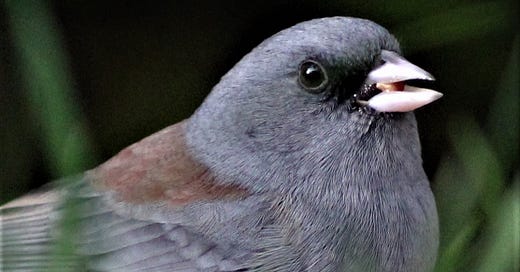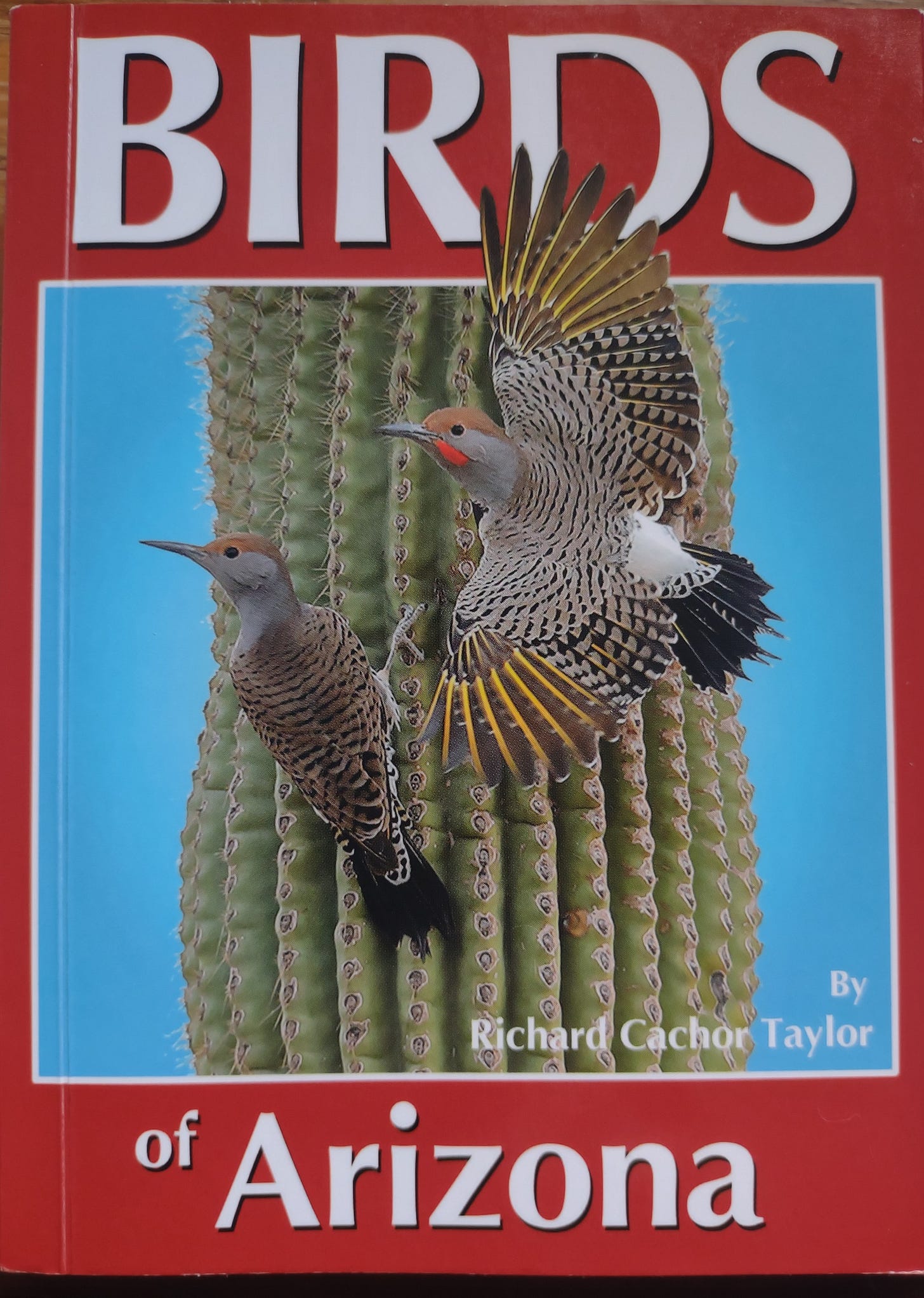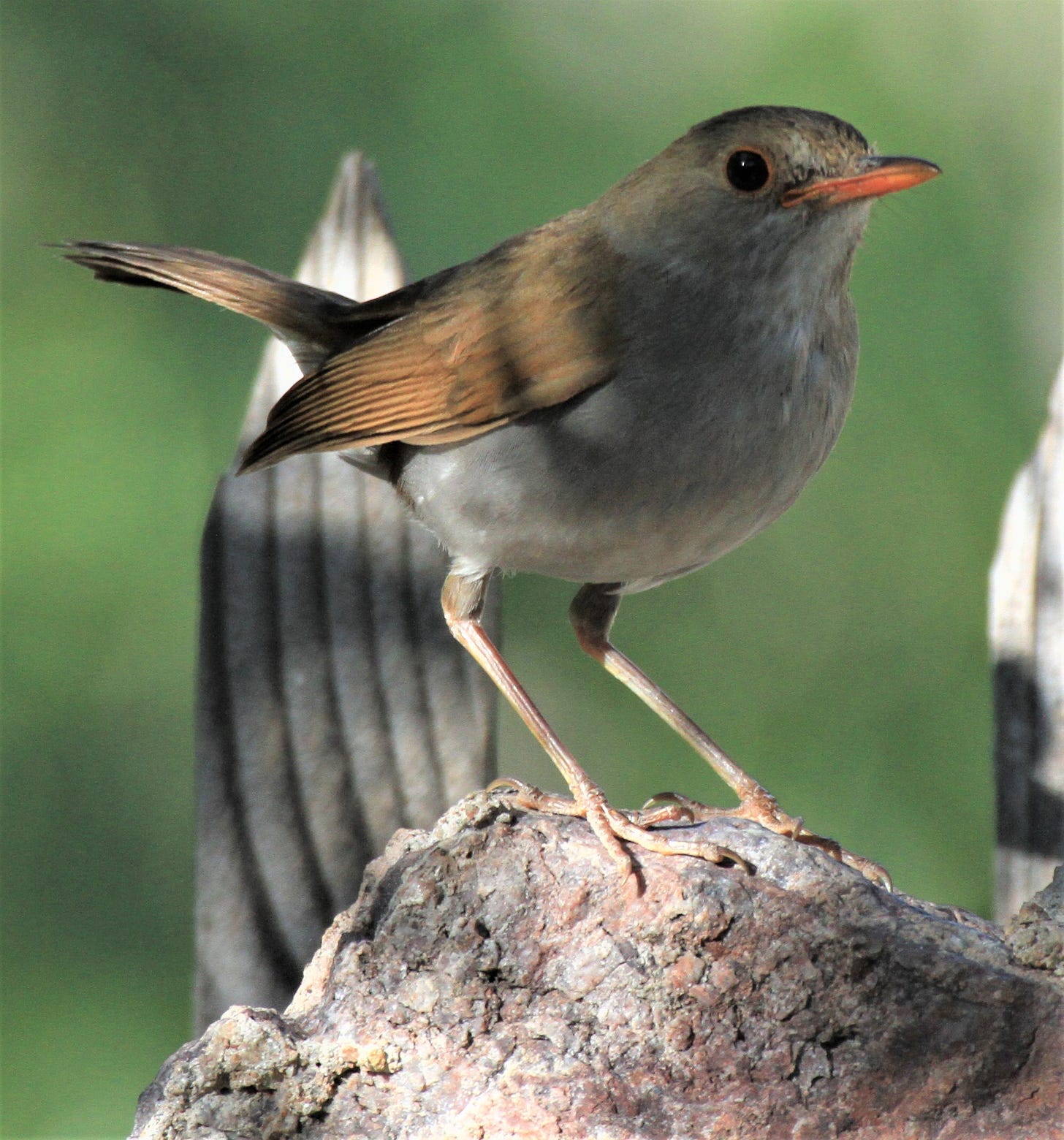October 8, 2022
The dark-eyed juncos have returned to the yard, at least one, anyway, and a week earlier than last year although normally I should see them in early September. The bird’s pink bill and reddish back marked it as the “gray-headed” race, one of the five races of dark-eyes that visit the yard, mostly—but not always—in the winter months. Birds of Arizona says it’s usually the common race in the mountains.
I’ve been diving into Rick Taylor’s new 2022 bird guide since it arrived from his publisher two weeks ago. In his letter to me, Bob Morse (of R. W. Morse Company), says that with over 500 species and 900 color photographs, this is the most comprehensive field guide of the birds of Arizona.
Indeed. The bird guide is an expansion of Rick’s Birds of Southeastern Arizona that R.W Morse published in 2010, with a similar design—a compact, pocket-sized photographic guide to our birdwatching mecca. Rick Taylor is a local expert on birds and has studied Mexican rarities like the elegant trogon and eared quetzal (Rick was the first to document a quetzal in the US). He told me his book is meant to be a handbook for everyone from novice to the professional ornithologist. “It’s the book I wish I had owned when I was a teenager, and the book I wish I had had to pass around the van when I was guiding professionally.”
The book has everything for its size: An introduction to birdwatching and the kinds of habitat found in Arizona with birds according to elevation, wonderfully illustrated, for example, by a chart of our 14 hummingbirds. Clear, full-color photos include both sexes. And maps! Five-color maps for every species show summer and winter ranges, breeding and non-breeding ranges, and areas where birds may be migrating.
A map feature I’ve never seen before shows small circles or “dimes” that denote exceptional records. Like how dark-eyed juncos, normally only winter visitors to Arizona, sometimes appear in far northern Arizona in summer (red dimes).

Dark-eyed juncos also appear in my yard as late as June. I have a few colors Rick might add for the Mule Mountains—like the “wintering” Lincoln’s sparrow that spent one June in the yard—with the juncos. Or the migrating Grace’s warblers I see in winter. Or the gray catbird, purple finch, and hooded warbler. And now, that short-tailed hawk...
“Wow,” Rick wrote me this week about the short-tail sighting. “I’m going to have to send you some coloring pencils for the new color dimes you’re adding to my maps—and a few blank pages!”
Noteworthy: His second edition will have to include a page for Arizona’s first-record, orange-billed nightingale-thrush.
I’ll send him the best one of my 63 photos.
Thanks for supporting the Big Yard!






Nice--our kinglets just arrived here. Tonight, I'm hearing a Mexican whip-poor-will, which is very late...trying to get a recording for the rare bird report...
Wow, they stay there longer and arrive earlier than here (dark-eyed juncos). Haven't seen one yet but today (after a big cold front) a lot of the turkey vultures seemed to be gone, I didn't see the flock of chimney swifts, there were hundreds of barn and tree swallows flying in the fog over the surface of the lake, a flock of Franklin's gulls and a ruby-crowned kinglet.